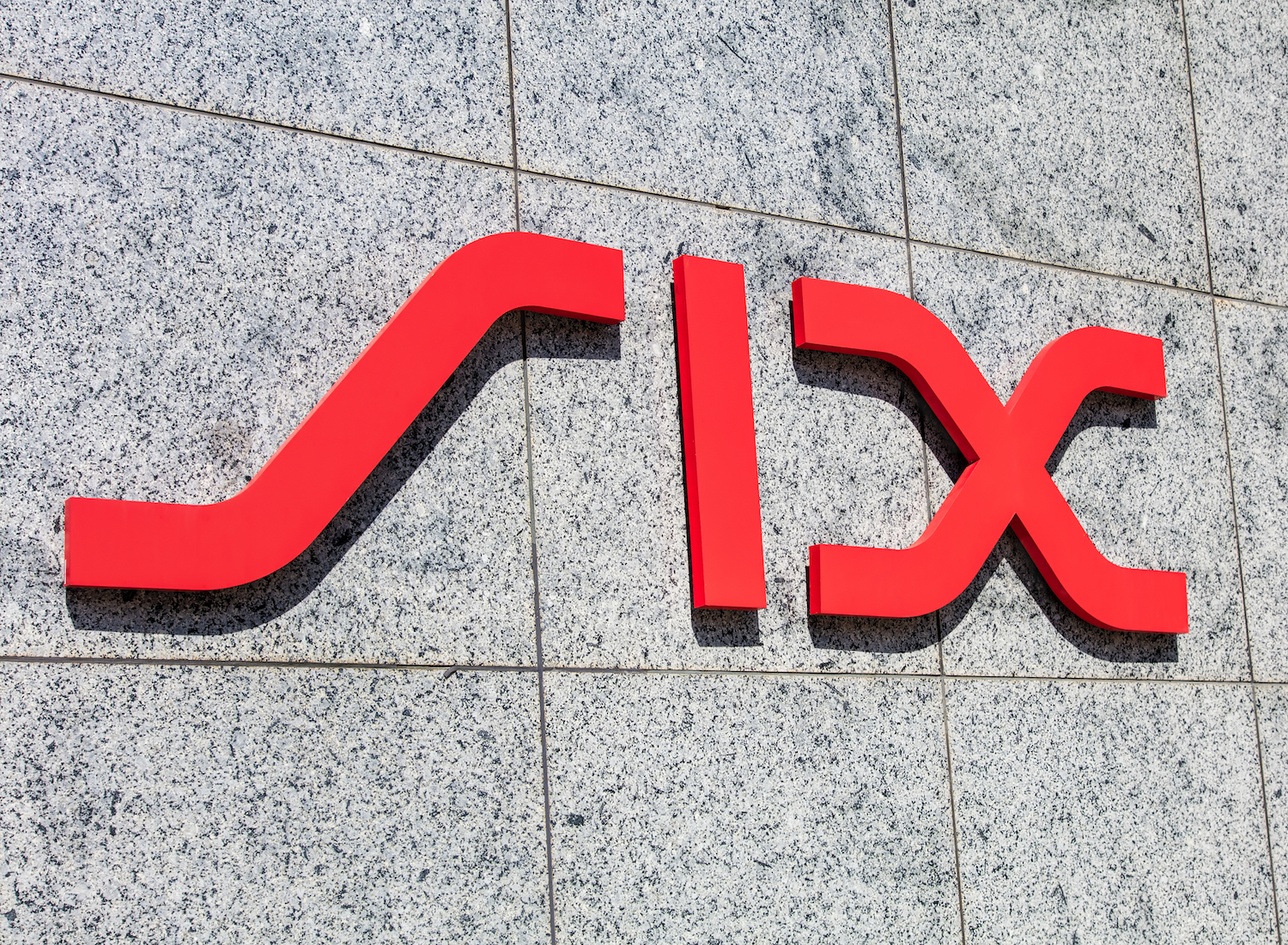First Mover: Coronavirus Trillions Get Bitcoiners Wondering if Halving Still Matters
Credit: Shutterstock/naskami
First Mover: Coronavirus Trillions Get Bitcoiners Wondering if Halving Still Matters
Before the coronavirus hit, bitcoiners were looking forward to next month’s “halving” – a once-every-four-years reduction in new supplies of the cryptocurrency – as the primary factor that would drive prices higher, potentially even a 13-fold increase from current levels.
Since the coronavirus pandemic hit, however, the market’s focus has shifted instead to the trillions of dollars of emergency aid and money injections pledged by the world’s governments and central banks. Those are seen as enhancing bitcoin’s appeal as a hedge against inflation, similar to the traditional arguments for buying gold.
You’re reading First Mover, CoinDesk’s daily markets newsletter. Assembled by the CoinDesk Markets Team, First Mover starts your day with the most up-to-date sentiment around crypto markets, which of course never close, putting in context every wild swing in bitcoin and more. We follow the money so you don’t have to. You can subscribe here.
However, with bitcoin (BTC) prices stagnating over the past week in a range between $6,600 and $7,200, well below the level predicted in many investors’ halving-predicated models, some industry analysts have been wondering when, or even if, prices will take off. An even knottier quandary for bitcoin bulls looms if prices begin to tumble anew.
“I don’t want to say that this is going to be bitcoin’s last stand, but it really is going to put the dominant investment narratives to the test,” said Joshua Frank, CEO of TheTIE, a provider of data on digital assets.
An analysis published Wednesday by TheTIE and trading platform eToro showed that mentions of “coronavirus” are now appearing far more than “halving” or “halvening” in cryptocurrency-focused publications:

A related finding was that, since the beginning of March, “gold” is increasingly mentioned in headlines atop stories about bitcoin:

Early writings by Satoshi Nakamoto, the pseudonymous creator of bitcoin, show that while the cryptocurrency network was designed to serve as a peer-to-peer electronic payment system, its resistance to inflation was considered a key attribute. Central banks have a long history of debasing their currencies, Nakamoto reportedly wrote in a February 2009 post.
The underlying blockchain network’s original computer programming stipulated that only 21 million bitcoins could ever be minted. The hard cap, the thinking goes, makes the cryptocurrency potentially more reliable as a store of value than gold, whose supply hinges mainly on the ability or willingness of miners to keep digging.
According to an International Monetary Fund blog post on Tuesday, governments around the world have now committed some $8 trillion to contain the coronavirus pandemic, including higher spending, foregone tax revenue, loans, corporate bailouts and guarantees.

And in a report on Tuesday, Deutsche Bank tallied some $2.7 trillion in balance-sheet expansions by major central banks in the past few weeks. Some of those are tied to accelerated purchases of government bonds and other assets – a type of monetary stimulus known as “quantitative easing,” or QE, that was popularized in the years after the 2008 crisis by then-Federal Reserve Chair Ben Bernanke.
“If QE looks more obviously a cover for unsustainable fiscal policies and especially if the primary function appears to be longstanding debt monetization, currencies will suffer,” wrote Alan Ruskin, a macro strategist for the German lender. “Gold is a natural beneficiary of this latter-stage QE, and looks to be already anticipating this outcome.”
Cryptocurrency analysts have highlighted an increasing correlation between bitcoin and gold prices. Eyeballing the performance since the end of April, there is a synchronicity, but it’s rough: Bitcoin surged, then fell back, while gold has continued to steadily climb.

Since the start of 2020, gold prices are up 13 percent, close to an eight-year high, while bitcoin is down 1.6 percent, with its price at just over half of the 2019 market peak around $13,000.
CoinDesk’s Daniel Cawrey reported on Wednesday that bitcoin trading volumes have subsided following a surge in early- to mid-March, when prices were swinging wildly.
What does that suggest? Are bitcoin traders beset by a lack of conviction? Or are they unwilling to part with their bitcoin – HODLing, in crypto-speak – because they think the price is going up? It’s safe to say that there are fewer buyers, and fewer sellers.

In the meantime, signals from the cryptocurrency options market imply that traders see less than a 10 percent chance of bitcoin trading above $10,000 by December. The other 90 percent of outcomes would constitute a big disappointment for bitcoin bulls who were betting that the halving would drive prices to $90,000 or higher.

And with the coronavirus potentially pushing the global economy into its worst recession since the 1930s, traders in all financial markets – from the analog to the digital – now have a lot more to think about beyond the halving.
The Federal Reserve said Wednesday in its monthly “Beige Book” survey of regional economic conditions that leisure, hospitality and retail industries have been hit hard by social-distancing measures and mandated closures. The energy sector is suffering from low prices and many factories, including auto plants, were shut down.
Separate U.S. government reports on Wednesday showed steep declines in retail salesand industrial production.
Bitcoin investors are trying to grok what it all means for bitcoin.
“Coronavirus now is the dominant narrative for crypto,” says TheTIE’s Frank.
If the stock market sells off again, possibly due to Wall Street reckoning that a V-shaped economic recovery isn’t likely, will bitcoin follow?
“If equities begin to decline due to fundamental factors (GDP/earnings declines, an elongated recovery, or simply ‘Market is too expensive’), I don’t expect BTC to follow,” Jeff Dorman, chief investment officer at Arca Funds, wrote in an email. “BTC is still an uncorrelated asset, and our fixation on positive correlations is recency bias.”
Nic Carter – a partner at Castle Island Ventures, which invests in blockchain-related companies – wrote Wednesday in a column for CoinDesk that government-funded bailouts could end up propping up companies whose business models could fundamentally change due to the coronavirus crisis. The airline industry, for example, may suffer from a decline in international travel.
“Generally, I think it reinforces the justification for the existence of bitcoin and non-state monetary systems,” Carter told CoinDesk in a message.
Michael Maloney, chief financial officer for bitcoin-mining firm Coinmint, said in an email that he’s still more focused on the halving: “While I like the speculation surrounding digital gold as a response to Fed issuance, the halving is a mathematical proof that I can model out.”
Unchecked money printing by central banks might theoretically spur runaway inflation, but economic contractions tend to be deflationary: As demand for products and services tumble, prices tend to fall. According to the Los Angeles Times, air fares are down at least 29 percent, with nonstop, round-trip cross-country flights costing as little as $153.
“The general direction of price inflation was down for both selling prices and non-labor input prices, as districts reported either slowing price growth, flat prices, or modest to moderate declines,” according to the Fed’s Beige Book. “These trends were seen as reflecting weaker demand for many goods and services in the wake of the COVID-19 pandemic.”
None of the Fed’s 12 regions reported upward wage pressures, due to widespread job cuts and salary cuts.
Put another way, the dollar’s purchasing power – for goods, services, people’s time – has increased, despite the Fed’s balance sheet pushing above $6 trillion last week for the first time in its 107-year history.
“The QE experiment isn’t happening in a vacuum,” Ariel Zetlin-Jones, associate professor of economics at Carnegie Mellon University’s Tepper School of Business, said Wednesday in a phone interview. “It’s happening in the context of the coronavirus shock.”
For bitcoin traders, it might be that context – instead of the halving – that increasingly matters the most.
Tweet of the day

Bitcoin watch

Trend: Bitcoin is flashing green on Thursday, amid signs of a risk reset in the traditional markets. The cryptocurrency is trading over $7,000 at press time, representing a 7 percent gain on the day.
Meanwhile, futures tied to the S&P 500 are up 0.8 percent and major European indices like Germany’s DAX and France’s CAC have so far added 1 percent and 0.30 percent to their value, respectively. The sentiment seems to have turned positive with European leaders taking tentative steps to ease coronavirus-led lockdowns and reopen their economies.
German Chancellor Angela Merkel announced Wednesday that small shops, along with larger car dealerships, bike shops and book shops will be allowed to reopen from Monday. Meanwhile, President Trump is set to announce on Thursday new guidelines for the reopening of the economy.
While bitcoin has bounced up strongly from Asian session lows, the cryptocurrency now needs to keep gains above the 50-day average at $7,000. The widely tracked technical line consistently capped upside last week.
If the bulls manage to establish a strong foothold above $7,000, more buyers may join the market ahead of the next month’s halving, leading to a test of $8,000. On the downside, the low of $6,486 seen during the Asian trading hours is the level to beat for the bulls. But, with stocks reporting gains, the cryptocurrency looks set to build a new base above $7,000.
New U.S. data, scheduled for release at 12:30 UTC, is expected to show that 5.5 million people registered for unemployment benefits in the week ended April 10. Jobless claims have already increased by a staggering 16.8 million in the last three weeks. The market mood may again turn sour if the numbers are higher-than-expected, in which case, BTC may have a tough time keeping gains above the 50-day average.
First Mover is CoinDesk’s daily markets newsletter. You can subscribe here.
Disclosure Read More
The leader in blockchain news, CoinDesk is a media outlet that strives for the highest journalistic standards and abides by a strict set of editorial policies. CoinDesk is an independent operating subsidiary of Digital Currency Group, which invests in cryptocurrencies and blockchain startups.









